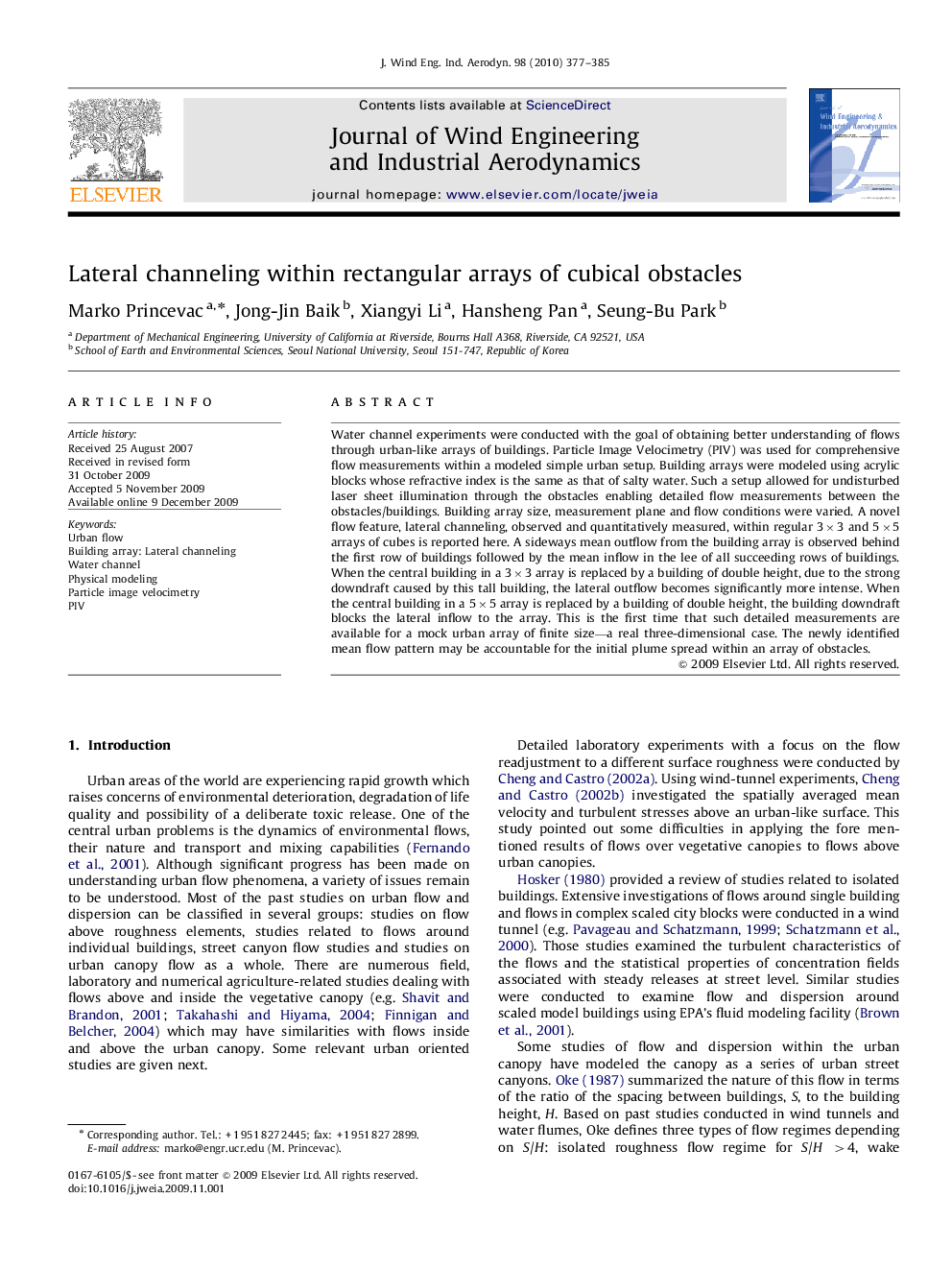| کد مقاله | کد نشریه | سال انتشار | مقاله انگلیسی | نسخه تمام متن |
|---|---|---|---|---|
| 293157 | 511114 | 2010 | 9 صفحه PDF | دانلود رایگان |

Water channel experiments were conducted with the goal of obtaining better understanding of flows through urban-like arrays of buildings. Particle Image Velocimetry (PIV) was used for comprehensive flow measurements within a modeled simple urban setup. Building arrays were modeled using acrylic blocks whose refractive index is the same as that of salty water. Such a setup allowed for undisturbed laser sheet illumination through the obstacles enabling detailed flow measurements between the obstacles/buildings. Building array size, measurement plane and flow conditions were varied. A novel flow feature, lateral channeling, observed and quantitatively measured, within regular 3×3 and 5×5 arrays of cubes is reported here. A sideways mean outflow from the building array is observed behind the first row of buildings followed by the mean inflow in the lee of all succeeding rows of buildings. When the central building in a 3×3 array is replaced by a building of double height, due to the strong downdraft caused by this tall building, the lateral outflow becomes significantly more intense. When the central building in a 5×5 array is replaced by a building of double height, the building downdraft blocks the lateral inflow to the array. This is the first time that such detailed measurements are available for a mock urban array of finite size—a real three-dimensional case. The newly identified mean flow pattern may be accountable for the initial plume spread within an array of obstacles.
Journal: Journal of Wind Engineering and Industrial Aerodynamics - Volume 98, Issues 8–9, August–September 2010, Pages 377–385